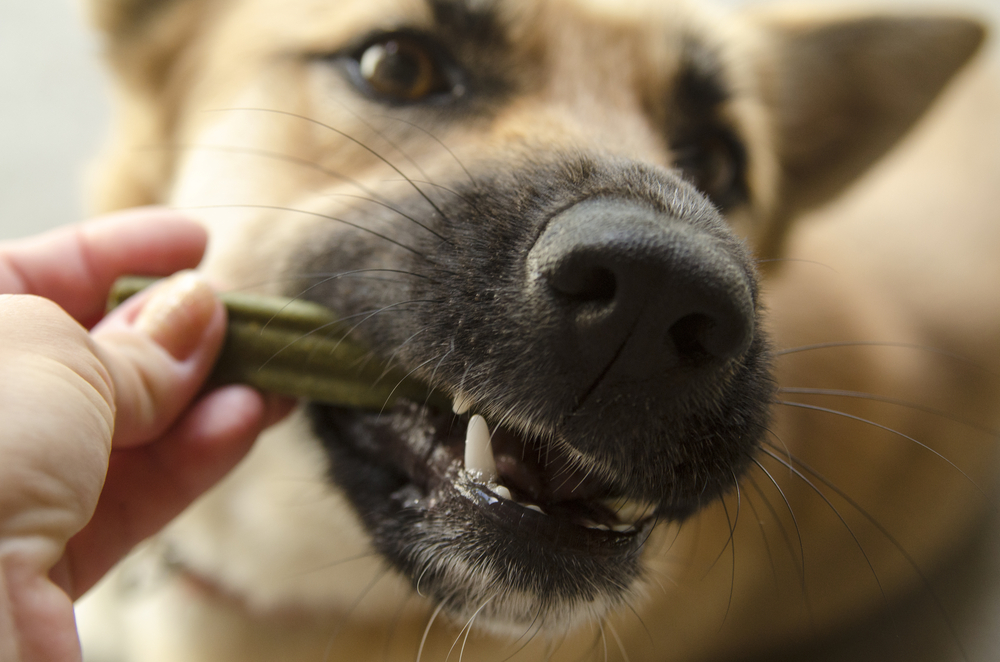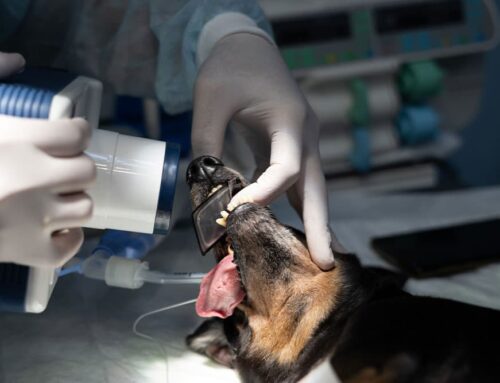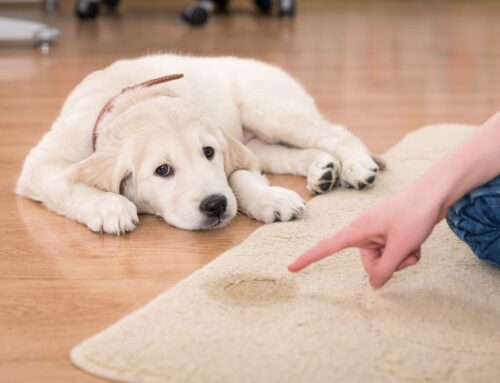Your pet’s oral health is critical to their overall health and happiness, as dental pain can significantly impact their life. To help you care for your four-legged friend’s oral health, our South Shores Pet Clinic team answers common questions about pet dental care.
Question: What causes dental disease in pets?
Answer: About 24 hours after your pet eats, plaque (i.e., a mixture of oral bacteria, saliva, and food debris) forms on their teeth. This is the fuzzy substance you feel on your teeth when you wake up in the morning, and is the cause of periodontal disease, which damages the gums, bone, and other structures that support the teeth. Plaque that is left undisturbed hardens into dental calculus (i.e., tartar) in 72 hours, and then can be removed only with professional scaling. In two weeks, the oral bacteria in plaque begin causing gingivitis, the first stage of periodontal disease, and the disease quickly progresses.
Q: What health issues can dental disease cause in pets?
A: Untreated dental disease affects more than your pet’s mouth—disease can harm their entire body. Some issues caused by dental disease include:
- Loose, missing, or fractured teeth
- Tooth resorptive lesions
- Tooth root abscesses
- Jaw fracture
- Bone loss
- Oronasal fistulas
- Eye issues
- Difficulty in regulating diabetes
- Heart, liver, lung, and kidney damage
- Oral cancers
Q: Are some pets at a higher risk of developing dental disease?
A: All pets are at risk for dental disease, but certain breeds, including toy and small breeds like dachshunds, Chihuahuas, and Yorkies, are prone to severe oral health and disease problems. Brachycephalic (i.e., flat-faced) pets are also prone to dental disease because of their oral anatomy. Overcrowded and misaligned teeth can trap more debris or damage oral structures, including the teeth, tongue, and gums. Pets with health conditions that cause inflammation or immunosuppression, such as feline immunodeficiency virus and feline leukemia, can also lead to more severe dental disease.
A pet’s lifestyle can also contribute to poor oral health. Dogs who chew aggressively, or who suffer severe anxiety and chew on metal kennels, can easily damage their enamel or fracture teeth. Pets who receive no at-home dental care accumulate plaque and tartar more quickly, and subsequently have more periodontal problems.
Q: How will I know if my pet has dental disease?
A: Oral bacteria can easily infiltrate the periodontal tissues below the gum line, where 60% of the tooth and its supporting structures lie. Since so much of the tooth—and potential disease—can lurk below the surface, dental disease in pets can be difficult to detect early. However, regular at-home check-ups can identify oral issues before they become serious problems. When you peek in your pet’s mouth, look for the following dental disease signs:
- Bad breath
- Excessive drooling
- Ropey saliva
- Red, swollen, or bleeding gums
- Brown, yellow, or grey tartar accumulation
- Loose, missing, or broken teeth
- Unusual lumps or bumps
Pets in pain are often stoic and may not show any behavior changes until their condition has advanced. However, subtle clues, such as refusing to eat hard food, dropping food while eating, or chewing on one side of the mouth, can help you spot dental disease. The pet may also be reluctant to play with toys, or avoid having their head petted.
Q: How is dental disease treated in pets?
A: Once plaque sets up shop below the gum line and hardens into tartar, professional treatment is needed to return your pet’s healthy smile. Anesthesia is required to fully evaluate your pet’s mouth, perform a dental cleaning, and provide additional treatment (e.g., extractions), if necessary. Once your pet is anesthetized, we can safely and thoroughly examine their oral cavity and take full-mouth dental X-rays, which allow us to diagnose periodontal problems, such as tooth-root abscesses, fractured teeth, or retained roots, that need treatment, and to grade your pet’s disease. We scale away plaque and tartar, removing all traces above and below the gum line, and then polish the enamel smooth so plaque formation is more difficult. We finish with a fluoride treatment or oral sealant as needed, and then recover your pet from anesthesia, unless they require extractions. Your four-legged friend then returns home to you with a slate of clean teeth ready for daily at-home dental care.
Q: What can I do to keep my pet’s teeth healthy at home?

Staying on top of your pet’s oral health through daily at-home care is the best way you can help prevent periodontal disease. Include the following approved dental health care products in your pet’s regimen:
- Soft-bristled toothbrush or finger brush
- Pet-friendly toothpaste
- Chews
- Treats
- Prescription dental health diet
- Food and water additives
- Oral rinses, sprays, and wipes
Remember, plaque takes only about 24 hours to form, so strive to perform dental care daily to prevent oral bacteria from overwhelming your pet’s mouth.
Ensuring your pet’s mouth remains healthy and infection-free is essential for their overall health and wellbeing. Keep your furry pal’s teeth in tip-top shape by scheduling a dental cleaning with our South Shores Pet Clinic team.







Leave A Comment